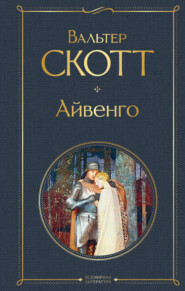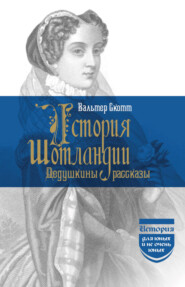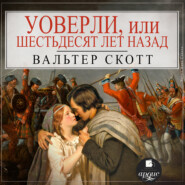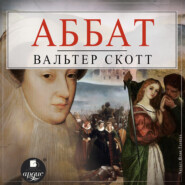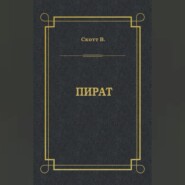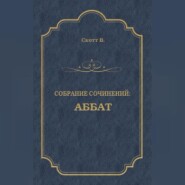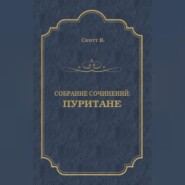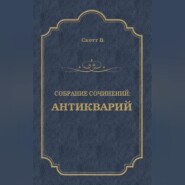По всем вопросам обращайтесь на: info@litportal.ru
(©) 2003-2025.
✖
The Pirate
Настройки чтения
Размер шрифта
Высота строк
Поля
A late medical gentleman, my particular friend, told me the case of a lunatic patient confined in the Edinburgh Infirmary. He was so far happy that his mental alienation was of a gay and pleasant character, giving a kind of joyous explanation to all that came in contact with him. He considered the large house, numerous servants, &c., of the hospital, as all matters of state and consequence belonging to his own personal establishment, and had no doubt of his own wealth and grandeur. One thing alone puzzled this man of wealth. Although he was provided with a first-rate cook and proper assistants, although his table was regularly supplied with every delicacy of the season, yet he confessed to my friend, that by some uncommon depravity of the palate, every thing which he ate tasted of porridge. This peculiarity, of course, arose from the poor man being fed upon nothing else, and because his stomach was not so easily deceived as his other senses.
Note VI. (#cn_102), p. 199. – Birds of Prey
So favourable a retreat does the island of Hoy afford for birds of prey, that instances of their ravages, which seldom occur in other parts of the country, are not unusual there. An individual was living in Orkney not long since, whom, while a child in its swaddling clothes, an eagle actually transported to its nest in the hill of Hoy. Happily the eyry being known, and the bird instantly pursued, the child was found uninjured, playing with the young eagles. A story of a more ludicrous transportation was told me by the reverend clergyman who is minister of the island. Hearing one day a strange grunting, he suspected his servants had permitted a sow and pigs, which were tenants of his farm-yard, to get among his barley crop. Having in vain looked for the transgressors upon solid earth, he at length cast his eyes upward, when he discovered one of the litter in the talons of a large eagle, which was soaring away with the unfortunate pig (squeaking all the while with terror) towards her nest in the crest of Hoy.
Note VII. (#cn_108), p. 280. – The Standing Stones of Stennis
The Standing Stones of Stennis, as by a little pleonasm this remarkable monument is termed, furnishes an irresistible refutation of the opinion of such antiquaries as hold that the circles usually called Druidical, were peculiar to that race of priests. There is every reason to believe, that the custom was as prevalent in Scandinavia as in Gaul or Britain, and as common to the mythology of Odin as to Druidical superstition. There is even reason to think, that the Druids never occupied any part of the Orkneys, and tradition, as well as history, ascribes the Stones of Stennis to the Scandinavians. Two large sheets of water, communicating with the sea, are connected by a causeway, with openings permitting the tide to rise and recede, which is called the Bridge of Broisgar. Upon the eastern tongue of land appear the Standing Stones, arranged in the form of a half circle, or rather a horse-shoe, the height of the pillars being fifteen feet and upwards. Within this circle lies a stone, probably sacrificial. One of the pillars, a little to the westward, is perforated with a circular hole, through which loving couples are wont to join hands when they take the Promise of Odin, as has been repeatedly mentioned in the text. The enclosure is surrounded by barrows, and on the opposite isthmus, advancing towards the Bridge of Broisgar, there is another monument, of Standing Stones, which, in this case, is completely circular. They are less in size than those on the eastern side of the lake, their height running only from ten or twelve to fourteen feet. This western circle is surrounded by a deep trench drawn on the outside of the pillars; and I remarked four tumuli, or mounds of earth, regularly disposed around it. Stonehenge excels this Orcadian monument; but that of Stennis is, I conceive, the only one in Britain which can be said to approach it in consequence. All the northern nations marked by those huge enclosures the places of popular meeting, either for religious worship or the transaction of public business of a temporal nature. The Northern Popular Antiquities contain, in an abstract of the Eyrbiggia Saga, a particular account of the manner in which the Helga Fels, or Holy Rock, was set apart by the Pontiff Thorolf for solemn occasions.
I need only add, that, different from the monument on Salisbury Plain, the stones which were used in the Orcadian circle seem to have been raised from a quarry upon the spot, of which the marks are visible.
GLOSSARY
A’, all.
Aboon, above.
Ae, one.
Ain, own.
Aits, oats.
Anes, once.
A’thegither, altogether.
Aught, owned.
Auld, old.
Awa, away.
Bailie, a magistrate.
Baittle, denoting that sort of pasture where the grass is short, close, and rich.
Bang, a blow.
Bear, a kind of barley.
Bee– “to have a bee in one’s bonnet,” to be harebrained.
Bern, bairn, a child.
Bicker, a wooden dish.
Bide, to await, to endure.
Biggin, a building.
Bilboes, irons.
Bismar, a small steelyard.
Bland, a drink made from butter-milk.
Blithe, glad.
Blude, blood.
Bodle, a small coin equal to one sixth of a penny sterling.
Bole, a small aperture.
Bonny-die, a toy, a trinket.
Boobie, a dunce.
Bowie, a wooden dish for milk.
Brae, a hill.
Braw, fine, pretty.
Buckie, a whilk.
Bumming, making a humming noise.
Ca’, to call.
Canny, good, worthy; safe.
Cannily, gently.
Capa, a Spanish mantle.
Caper, a Dutch privateer of the seventeenth century.
Carle, a churl; also, a farm servant.
Carline, a witch.
Cart-avers, cart-horses.
Chapman, a small merchant or pedlar.
“Clashes and clavers,” scandal and nonsense.






